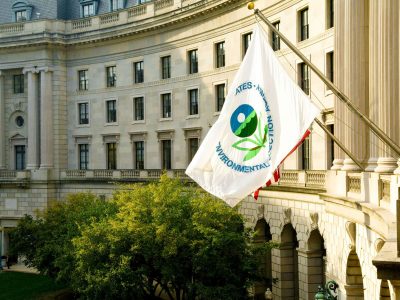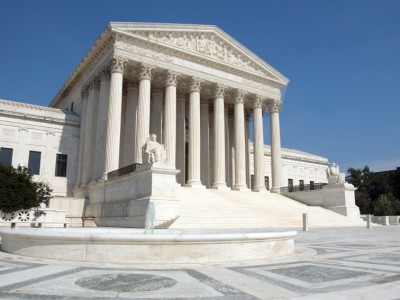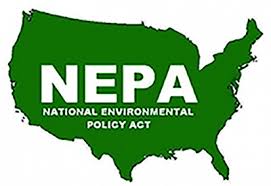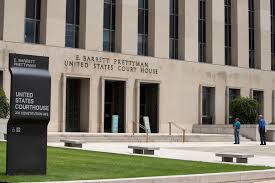administrative law
Rethinking Presidential Administration
Giving the President more control of regulation has been a good thing — up to a point.
Conservatives love to complain about faceless bureaucrats, but blaming bureaucrats for regulations is hopelessly out of date. When Elena Kagan was a professor, she wrote an article called “Presidential Administration.” The article applauded her former boss Bill Clinton for seizing greater control of the regulatory process away from agencies. That trend has accelerated to the …
Continue reading “Rethinking Presidential Administration”
CONTINUE READINGRestoring Agency Norms
It’s not just the White House. We also have to repair the way agencies operate.
Donald Trump prided himself on his contempt for established norms of presidential action. Whole books have been written about how to restore those norms. Something similar also happened deeper down in the government, out in the agencies like EPA that do the actual work of governance. Trump appointees have corrupted agencies and trashed the norms …
Continue reading “Restoring Agency Norms”
CONTINUE READINGTaming Textualism: A Guide for Environmental Lawyers
How to Argue Cases to Conservative Judges
Textualism is the dominant method of interpreting statutes among conservative judges. It purports to base interpretation on the “ordinary meaning” of the statutory language. This approach ignores traditional tools of statutory interpretation like considering what was actually said in Congress. Ignoring what Congress actually intended seems odd to me. Still, lawyers have to make arguments …
Continue reading “Taming Textualism: A Guide for Environmental Lawyers”
CONTINUE READINGShould a New Congress Use a Deeply Flawed Law to Cancel Trump’s Regulations?
The Congressional Review Act was Newt Gingrich’s brainchild. It should be repealed.
The Congressional Review Act (CRA), part of Newt Gingrich’s “Contract With America”, slumbered for many years in obscurity. Then, in 2017, Congress dusted it off and used it to kill fifteen Obama administration regulations. I’m not the first to ask whether there should be payback if the White House and Senate change hands. There are …
Continue reading “Should a New Congress Use a Deeply Flawed Law to Cancel Trump’s Regulations?”
CONTINUE READINGEnforcing NEPA’s Forgotten Mandate
The courts have failed to enforce a core requirement of NEPA. That leaves the White House.
The Democrats have adopted an ambitious platform for environmental protection, full of innovative legislative initiatives. Here’s another idea Biden and Harris should consider, making use of the oldest of the modern environmental statutes. The National Environmental Policy Act (NEPA) is best known for requiring environmental impact statements. While they have enforced that requirement, the courts …
Continue reading “Enforcing NEPA’s Forgotten Mandate”
CONTINUE READINGClimate Litigation 2020
Here’s the state of play and some thoughts about the future.
Trump Administration has been a fertile source of litigation. With the election only about three months away, this seems like a good time to see how things stand in climate-related case. In a nutshell, climate litigation has been a growth industry under Trump, and the Administration has done poorly in court. The Current State of …
Continue reading “Climate Litigation 2020”
CONTINUE READINGWasting Away in Methaneville
Another Trump rollback gets slapped down in court.
A week ago, a federal district court overturned yet another ill-conceived rollback by the Trump Administration. The case, California v. Bernhardt, involved releases of methane, a potent greenhouse gas. The legal flaws in the rollback by the Bureau of Land Management, are all too typical of the Administration’s work product. The Administration has repeatedly lost …
Continue reading “Wasting Away in Methaneville”
CONTINUE READINGHappy Birthday, Chevron Doctrine!
The Chevron doctrine has been a keystone of administrative law. But now it’s under siege.
Thirty-six years ago today, the Supreme Court decided the Chevron case. The case gives leeway to agencies when their governing statutes are unclear or have gaps. It’s probably the most frequently cited Supreme Court opinion ever. But now the Chevron doctrine is under fire from conservatives, who used to be its strongest advocates. Here’s how …
Continue reading “Happy Birthday, Chevron Doctrine!”
CONTINUE READINGLessons from the DACA Ruling
The Court’s ruling could have important implications for environmental cases.
The Supreme Court’s ruling in Department of Homeland Security v. UC Regents was great news for 700,000 “Dreamers” who would otherwise face deportation. It also has important implications for administrative law — and for environmental law cases in particular. Here are three main takeaways. Requiring Reasoned Explanation. Chief Justice John Roberts reinforced the principle that …
Continue reading “Lessons from the DACA Ruling”
CONTINUE READINGDC Circuit Restricts “Housekeeping” Regulations
The Trump Administration likes to justify policy initiatives based on vague grants of authority. That’s just become harder.
Earlier today, the D.C. Circuit Court of Appeals decided two cases that add to the legal difficulties the Trump EPA will face in court. The difficulties relate to two proposed EPA rules that attempt to hamstring future efforts to impose tighter restrictions on pollution. Both EPA rules rely on vague, general grants of rule-making authority …
Continue reading “DC Circuit Restricts “Housekeeping” Regulations”
CONTINUE READING











